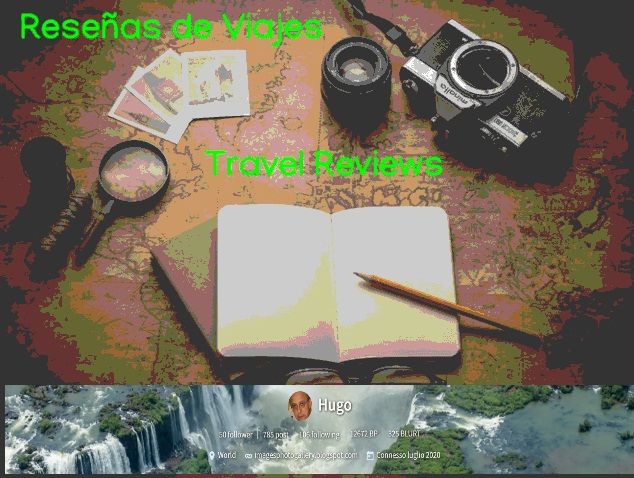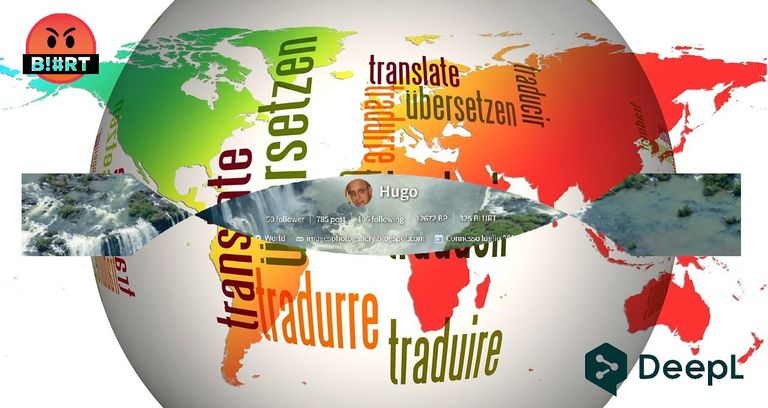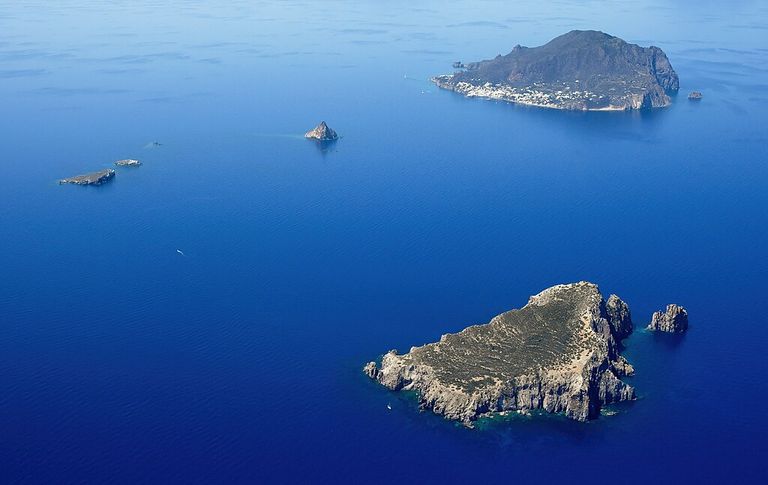
Italy is the first country in the world in terms of the number of sites designated by UNESCO as World Heritage Sites.
Five of these sites are in Sicily: the archaeological area of Agrigento; the Roman villa of Casale, in Piazza Armerina; the Aeolian Islands; the Baroque cities of the Noto Valley, and Syracuse and the rocky necropolis of Pantalica.
The route we propose here, which is mainly focused on Greco-Latin culture, can be completed with one of these other itineraries, which are also essential for getting to know an island full of history that was the centre of the world in various periods, such as in the late phase of the Roman Empire.

Italia es el primer país del mundo en número de lugares denominados por la Unesco patrimonio de la humanidad.
Cinco de esos lugares se encuentran en Sicilia: El área arqueológica de Agrigento; la villa romana del Casale, en Piazza Armerina; las islas Eolias; las ciudades barrocas del valle de Noto, y Siracusa y la necrópolis rocosa de Pantalica.
El recorrido que aquí proponemos, ceñido sobre todo a la cultura grecolatina, puede ser completado con alguno de esos otros itinerarios también imprescindibles para conocer una isla repleta de historia que llegó a ser el centro del mundo en varias épocas, como en la fase tardía del Imperio Romano.
The Greco-Latin mysticism of heroes and gods captivates the visitor. / La mística grecolatina de héroes y dioses atrapa al visitante.
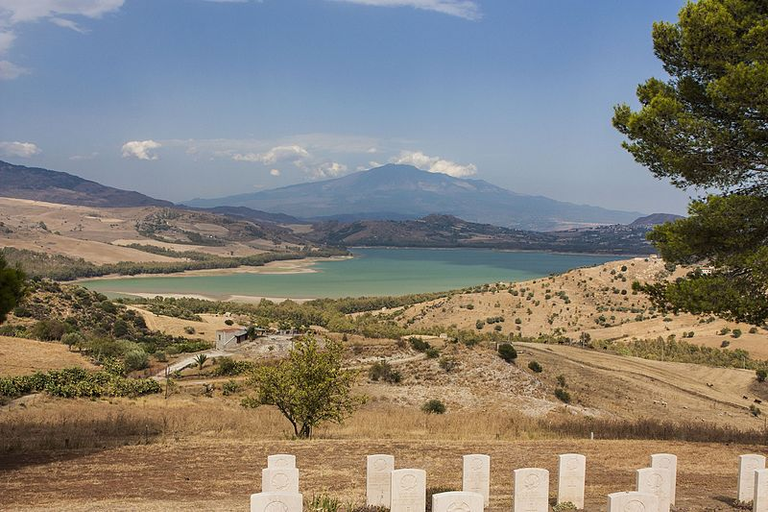
Mount Etna, home of Vulcan, watches everything. Polyphemus, furious, sows the coast of Aci Reale with obstacles. Proserpina is kidnapped in Lake Pergusa. Myths in their purest form. A fabulous territory.
We finally arrived. The three-kilometre Strait of Messina suddenly brings us face to face with classical myth and the monsters that besieged seafaring travellers, the winds and storms, a kind of finis mundi. Messina, an industrial city, however, does not present any special fascination as we expect to find on this legendary island, and we decided to stop further south, in Castelmola, a somewhat cheaper medieval village that stands on a steep peak above Tauromenion or Mount Tauro, today's Taormina.
There are undoubtedly many charms in this ancient Greek colony, founded in the 8th century BC, but its prices are the highest in all of Sicily. With splendid views of the Ionian coast, Taormina is a tourist city with a pleasant climate, and a recent history shrouded in the dream of romantics and artists, where freedom regarding homosexual unions was breathed in the early 20th century. Its Greco-Latin theatre offers an incomparable belvedere, an immense treasure that our eyes should become accustomed to on this trip. Don't miss a visit, right at the foot of Taormina, to Giardini-Naxos, which takes its name from the largest of the Greek Cyclades islands and was the first settlement founded by the first Greek settlers who landed on the island. But from this enclave, and even before, there is a powerful presence that watches over us and disturbs us in an unparalleled, almost indescribable way, a telluric force that exerts a mysterious power of attraction on its inhabitants: Etna, the largest volcano in Europe, with its clouds and fluttering smoke...
Legend has it that Zeus, in his fight against the Titans, threw Typhon into the volcano, and that the monster's mouth was thus transformed into the crater, and that it spits lava when it is angry, and roars in earthquakes, considering its arms and body the entire island, as if it were lying supine with its feet facing west. Etna, however, is more, because it will collect many other myths around its fire, such as that of it being the home of Vulcan and housing within it the forge where weapons were forged for the god of war, Mars. This volcano was also the birthplace of the god Dionysus, who was worshipped in a frenzied way, with a culture of wine, partying and orgy...
There are organised bus tours, on the south side, to the Philosopher's Tower, where Empedocles, another famous Sicilian, threw himself into the incandescent lava, demanding that society purify itself in a certain way, since he considered that at that time it had become too corrupt... and right there we remember Bertolt Brecht's famous poem The Sandals of Empedocles: what would the philosopher say now if he were alive! There is another path, on the north side, to the Piana Provenzana, surrounded by perpetual snow, in that lunar landscape that remains after the eruptions.

El Etna, morada de Vulcano, lo observa todo. Polifemo, furioso, siembra de escollos la costa de Aci Reale. Proserpina es raptada en el lago de Pergusa. Mitos en estado puro. Un territorio fabuloso.
Por fin llegamos. El estrecho de Messina, de tres kilómetros, nos sitúa de golpe ante el mito clásico y los monstruos que asediaban a los viajeros navegantes, los vientos y las tormentas, una especie de finis mundi. Messina, ciudad industrial, sin embargo, no presenta especial fascinación tal y como esperamos encontrar en esta isla legendaria, y decidimos hacer escala más al sur, en Castelmola, un pueblecito medieval algo más económico que se alza en un pico escarpado sobre Tauromenion o monte Tauro, la actual Taormina.
Sin duda son numerosos los encantos de esta antigua colonia griega, fundada en el siglo VIII antes de Cristo, pero sus precios son los más altos de toda Sicilia. Con miradores espléndidos hacia la costa jónica, Taormina es una ciudad turística con un clima agradable, y una reciente historia envuelta en el sueño de los románticos y artistas, donde se respiraba libertad respecto a las uniones homosexuales a comienzos del siglo XX. Su teatro grecolatino ofrece un belvedere incomparable, una riqueza inmensa a la que nuestros ojos deberían ya irse habituando en este viaje. No hay que dejar de acercarse, justo a los pies de Taormina, a Giardini-Naxos, que recoge el topónimo de la mayor de las islas Cícladas griegas y que fue el primer asentamiento que fundaron los primeros colonos griegos que desembarcaron en la isla. Pero desde este enclave, e incluso antes, hay una presencia poderosa que nos vigila y nos inquieta de un modo inigualable, casi indescriptible, una fuerza telúrica que ejerce un misterioso poder de atracción sobre sus habitantes: el Etna, el volcán más grande de Europa, con sus nubes y humos revoloteando...
Cuenta la leyenda que Zeus en su lucha contra los Titanes arrojó a Tifón al volcán, y que así se transformó la boca del monstruo en el cráter, y que escupe la lava cuando se enfada, y ruge en los terremotos, considerándose los brazos y su cuerpo la isla entera, como si estuviera tendido en decúbito supino con los pies hacia el oeste. El Etna, sin embargo, es más, porque recogerá otros muchos mitos alrededor de su fuego, como el de morada de Vulcano y albergar en su interior la herrería donde se forjaban las armas para el dios de la guerra, Marte. También este volcán fue donde nació el dios Dionisos, a quien se le rendían cultos desenfrenados en torno a la cultura del vino, la fiesta y la orgía...
Hay excursiones organizadas en autobús, por el lado sur, hasta la torre del Filósofo, donde Empédocles, otro siciliano insigne, se lanzó a la lava incandescente, exigiendo a la sociedad en cierta manera purificarse, puesto que consideraba que en aquel entonces ésta se había corrompido en demasía... y allí mismo recordamos el célebre poema de Bertolt Brecht Las sandalias de Empédocles: ¡qué diría ahora el filósofo si viviera! Hay otro camino, por el lado norte, hasta la Piana Provenzana, rodeada de nieves perpetuas, en ese paisaje lunar que queda después de las erupciones.
Polyphemus, the Cyclops. / Polifemo, el cíclope.
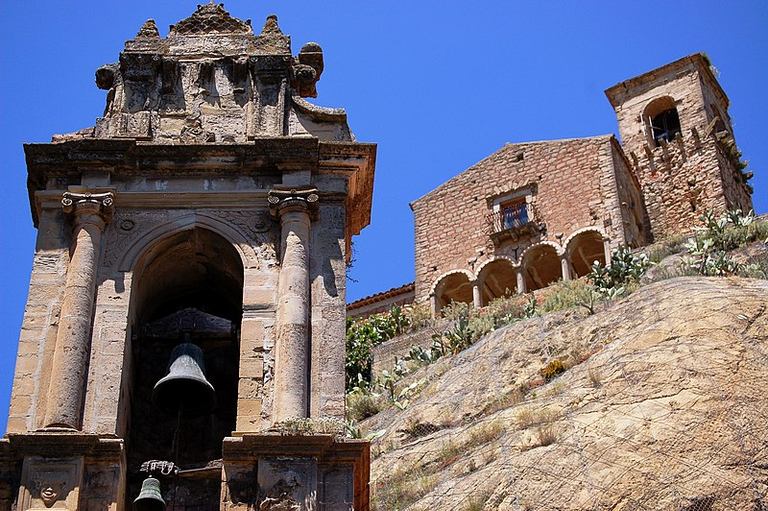
On the slopes of the volcano there are beautiful places and villages, such as Linguaglossa or Castiglione di Sicilia; The Gole di Alcántara (the Spanish name for one of the many traces of the Aragonese's passage), intense lemon groves (from which the typical lemon liqueur or limoncello is made, a very appreciated digestive when homemade), small, dense roads, and the land, in general, that seems to tremble, where there is an unrest without purpose that, in any case, is due to the ever-present subterranean forces.
But it is towards the coast where the myth takes shape again. Less than three or four kilometres away, we arrive at Aci Trezza, the little village where the story of I Malasangre, the novel by Giovanni Verga, took place, and where Luchino Visconti's first film, La tierra trembla (1948), was filmed. The shepherd Acis, son of the god Pan, was in love with Galatea, but the beautiful nymph was also infatuated with the Cyclops Polyphemus, who, jealous, killed the young shepherd. Then he cut it into nine portions and spread them around.
the area, thus founding the surrounding villages that bear his name: Aci Trezza, Aci Castello, Aci Reale, etc. And thus he inspired the beautiful Fable of Polyphemus and Galatea by Luis de Góngora, although with a rather more elaborate language... In addition, in Aci Reale you can walk along the Ribera dei Cyclopes, where there are still remains of the fury of Polyphemus, the most famous of these monstrous giants when, after having captured Ulysses and his crew, he blinded his only eye and escaped: the Cyclops threw large stones at the hero who was fleeing by sea, and here is the explanation of the reefs that adorn the coast with their striking throwing shapes.

A las faldas del volcán hay parajes y pueblos hermosísimos, como Linguaglossa o Castiglione di Sicilia; Le Gole di Alcántara (así, con el nombre español, una de tantas huellas del paso de los aragoneses), intensos limonares (de ellos se elabora el típico licor de limón o limoncello, un digestivo muy apreciado cuando es casero), pequeñas carreteras tupidas, y la tierra, en general, que parece que tiembla, en la que existe una inquietud sin objeto que, en cualquier caso, se debe a las fuerzas subterráneas siempre presentes.
Pero es hacia el litoral donde el mito cobra cuerpo de nuevo. Llegamos, a menos de tres o cuatro kilómetros, a Aci Trezza, el pueblecito en el que sucedía la historia de Los malasangre, la novela de Giovanni Verga, y donde se rodó la opera prima de Luchino Visconti, La tierra tiembla (1948). El pastor Acis, hijo del dios Pan, estaba enamorado de Galatea, pero igualmente de la hermosa ninfa se había quedado prendado el cíclope Polifemo, que, celoso, mató al joven pastor. Luego lo troceó en nueve porciones y las diseminó por la zona, fundando así los pueblos circundantes que llevan su nombre: Aci Trezza, Aci Castello, Aci Reale, etcétera. Y de este modo inspiró la preciosa Fábula de Polifemo y Galatea a Luis de Góngora, aunque con un lenguaje bastante más rebuscado... Además, en Aci Reale se puede pasear por la Ribera de los Cíclopes, donde quedan aún restos de la furia de Polifemo, el más famoso de estos gigantes monstruosos cuando, tras haber apresado a Ulises y a su tripulación, éste le cegó su único ojo y escapó: el cíclope lanzó grandes piedras al héroe que huía por el mar, y he aquí la explicación de los escollos que adornan el litoral con sus llamativas formas arrojadizas.
Syracuse. / Siracusa.
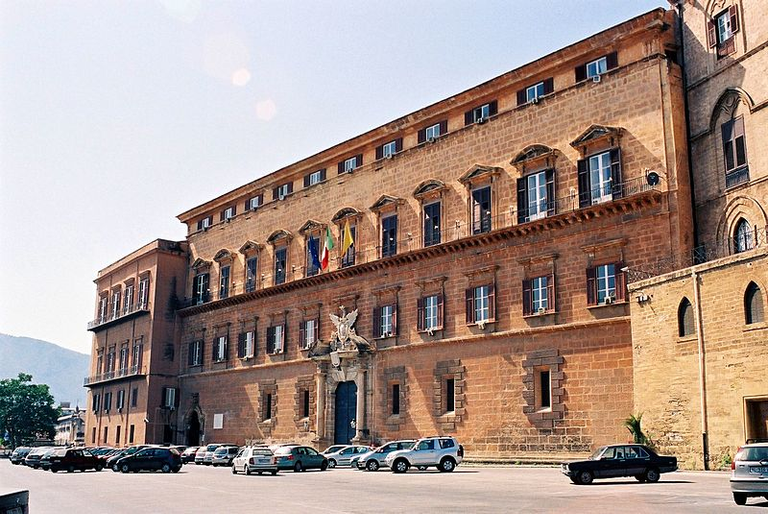
Towards the south, and following the coast, we leave Catania and the ruins of Megara Hyblaea to one side, although the image of Etna continues to accompany us. We arrive at Syracuse. Here the stratification of cultures is mind-boggling, with more than 2,500 years superimposed on each other; for example, the cathedral, in Baroque style, which uses exterior columns with Doric capitals embedded in the construction. Archimedes was its most illustrious citizen, and Cicero said that Syracuse was the most beautiful city in the world.
Plato himself came here at the request of the tyrant Dionysus. Its theatre, the largest in the West and in the ancient world, has a capacity of 20,000 people. Euripides and Sophocles were performed here, and of course Aeschylus, who was from Syracuse. Other exciting ruins are its amphitheatre, and the Temple of Apollo, which is located in the centre of Syracuse and was rediscovered in the first half of the 20th century. Its elegant structure is a bit sketched and exposed, and it has some deeply original inscriptions: they are the only known sign and case in a Greek temple where you can read who the architect was.
The nearby Greek fortification, which stands on a gentle hill, is considered the largest and most important in existence, the result not only of competition with Athens, but above all as a result of having been the capital of the Mediterranean for several centuries, until the arrival of Carthaginian power and, shortly after, Roman power. We only mention in passing the magnificent medieval castle of Emperor Frederick II, but it is a must-see.
The Sistine Chapel of the mosaic. To the south there are splendid and baroque cities in the Noto valley, such as Ragusa, Noto or Modica, and their beautiful fields of carob and prickly pear trees. You can still see Etna in the distance, watching over us. But we head straight for the Roman Villa del Casale, in Piazza Armerina, more or less in the centre of the island, which we call, with permission from other Tunisian mosaic testimonies, the Sistine Chapel of mosaics. In this Roman villa, discovered in 1929, lived, among others, the Emperor Maximian Hercules (286305) and his family at the beginning of the 4th century. It is considered one of the most important monuments in Sicily, something truly incomparable.
The scenes depicted in the mosaics in its 4,000 square metres are an extraordinary testimony to the social life and customs of the late Roman Empire. Of the 46 rooms that we can see, the one with the 10 girls in bikinis playing ball and doing gymnastics is considered the jewel of the villa; but there are other equally extraordinary ones, with scenes of hunting or love, or the transport of wild animals from North Africa in ships destined for Roman games and entertainment.
The myth also feeds, near Piazza Armerina, on Lake Pergusa, one of the most transcendental episodes in the history of anthropology: the abduction of Proserpina. Daughter of Ceres (the goddess of the Earth and the harvest), she lived in this lake - today a wetland on the verge of drying up - and played around it picking flowers and singing until she was abducted by Pluto to reign with him in the underworld. Then the legend deals with the rest, not only because it is from there that the explanation of the change of seasons is derived, but because if Proserpina ate those pomegranate seeds it was for no other reason than to avoid having to return to earth.

Hacia el sur, y siguiendo el litoral, dejamos a un lado Catania y las ruinas de Megara Hyblaea, aunque la imagen del Etna sigue acompañándonos. Llegamos a Siracusa. Aquí la estratificación de culturas llega a ser alucinante, con más de 2.500 años superpuestos; por ejemplo, la catedral, de estilo barroco, que se sirve de las columnas exteriores con los capiteles dóricos incrustados en la construcción. Arquímedes fue su ciudadano más ilustre, y Cicerón dijo que Siracusa era la ciudad más bella del mundo.
El mismísimo Platón vino aquí reclamado por el tirano Dionisos. Su teatro, el más grande de Occidente y del mundo antiguo, posee capacidad para 20.000 personas. Aquí se representó a Eurípides y a Sófocles, y por supuesto a Esquilo, que era siracusano. Otras ruinas emocionantes son su anfiteatro, y el templo de Apolo, que se halla en el centro de Siracusa y fue redescubierto en la primera mitad del siglo XX. Queda un poco dibujada y al aire su elegante estructura, la cual presenta unas inscripciones profundamente originales: son la única señal y caso conocido en un templo griego donde se puede leer quién fue el arquitecto.
La cercana fortificación griega, que se erige en una suave colina, se considera la más importante y grande que existe, fruto no sólo de la competencia con Atenas, sino sobre todo como resultado de haber sido la capital del Mediterráneo durante varios siglos, hasta la llegada del poderío cartaginés y, justo después, romano. Citamos sólo de paso el magnífico castillo medieval del emperador Federico II, pero que hay que visitar obligadamente.
La Capilla Sixtina del mosaico. Al sur quedan ciudades espléndidas y barrocas en el valle de Noto, como Ragusa, Noto o Modica, y sus bellos campos de algarrobos y chumberas. Todavía se puede divisar muy a lo lejos el Etna vigilante. Pero nos dirigimos directamente hacia la villa romana del Casale, en Piazza Armerina, más o menos en el centro de la isla, que nosotros denominamos, con permiso de otros testimonios de mosaicos tunecinos, como la Capilla Sixtina del mosaico. En esta villa romana, descubierta en 1929, habitaron, entre otros, el emperador Maximiano Hércules (286305) y su familia a comienzos del siglo IV. Se considera como uno de los monumentos más importantes de Sicilia, algo realmente incomparable.
Las escenas plasmadas en los mosaicos en sus 4.000 metros cuadrados constituyen un extraordinario testimonio de la vida social y las costumbres del bajo Imperio Romano. De las 46 salas que podemos contemplar, la de las 10 muchachas en biquini jugando a la pelota y haciendo gimnasia se considera la joya de la villa; pero existen otras igualmente extraordinarias, con escenas de caza o de amor, o el traslado de las fieras de África del Norte en barcos destinadas a los juegos y diversiones romanas.
El mito también alimenta, cerca de Piazza Armerina, en el lago di Pergusa, uno de los episodios más trascendentales para la historia de la antropología: el rapto de Proserpina. Hija de Ceres (la diosa de la Tierra y de las cosechas), vivía en este lago -hoy un humedal a punto de secarse-, y por sus alrededores jugaba cogiendo flores y cantando hasta que fue raptada por Plutón para que reinase con él en los infiernos. Luego la leyenda se ocupa del resto, no sólo porque de ahí se deriva la explicación del cambio de las estaciones, sino porque si Proserpina se comió aquellos granos de la granada no fue por otra razón que para no tener que volver a la tierra.
Agrigento.
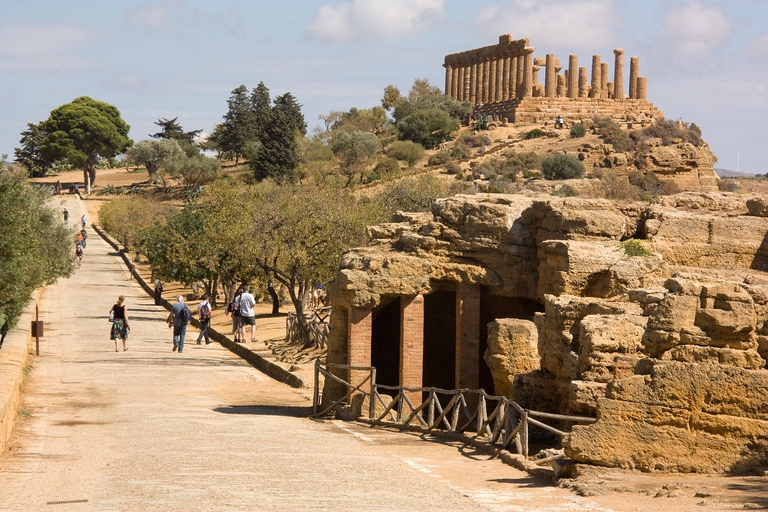
Before going down to the south, we can visit the excavations of Morgantina, which has a Greek theatre and some columns that still resist the storm with some dignity. But just under 100 kilometres to the southwest is Agrigento, where we visit the famous Valley of the Temples, an indelible example of the power of religion in ancient times. With Port Empedocle in the background, the city boasts some other attractions, but nothing like the aforementioned Valley of the Temples, which is almost apotheotic. Hungry after so much history, we will never be disappointed by the culinary issue on the island, especially for its exquisite pasta (caserecci, ravioli...).
Don't forget to try its sweets: the traditional cassata, or cassatine (plural diminutive), for those on a diet, and cannoli, filled with ricotta, the famous Italian curd. In the south, pastry making is a very serious matter! And we resume our route towards Selinonte, passing by the ruins of Heraclea Minoa, where we can easily guess, of course, another theatre.

Antes de descender hasta el sur podemos acercarnos a las excavaciones de Morgantina, que dispone de un teatro griego y de algunas columnas resistiendo al oraje todavía con cierta dignidad. Pero a algo menos de 100 kilómetros hacia el suroeste queda Agrigento, donde visitamos el famosísimo valle de los Templos, una muestra indeleble del poder de la religión en la antigüedad. Con Puerto Empédocle al fondo, la ciudad ostenta algunos otros atractivos, pero nada que ver con el mencionado valle de los Templos, casi apoteósico. Hambrientos tras tanta historia, en ninguna ocasión nos va a decepcionar la cuestión culinaria en la isla, sobre todo por su exquisita pasta (caserecci, ravioli...).
No dejen de probar sus dulces: la tradicional cassata, o las cassatine (diminutivo plural), para aquellos que estén a dieta, y los cannoli, rellenos de ricotta, el célebre requesón italiano. ¡En el meridión la pastelería es una cosa muy seria! Y retomamos, hacia Selinonte, nuestra ruta, pasando por las ruinas de Heraclea Minoia, en las que puede adivinarse sin dificultad, cómo no, otro teatro.
Eternal enemies. / Eternas enemigas.
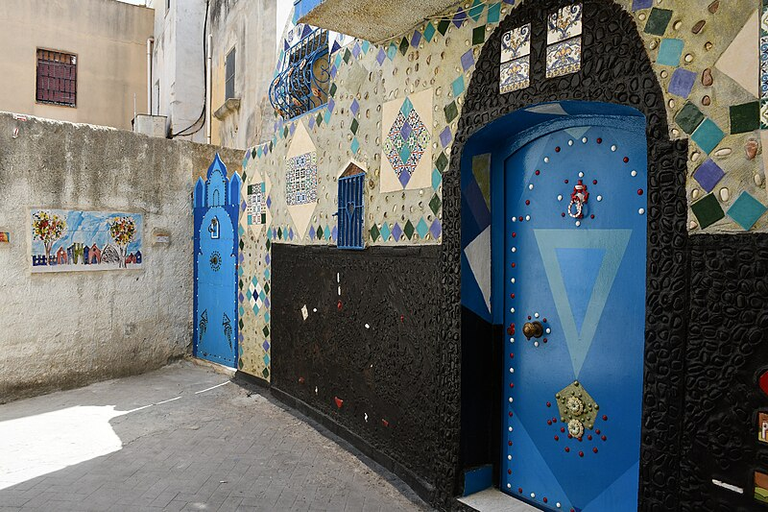
Selinonte, however, without being as famous as Agrigento, seems much more interesting to us and is even more striking for its atmosphere. The remains of Selinonte are magnificent. Its eternal enemy, Segesta, almost on the north coast, which at first allied itself with the Carthaginians, from the 3rd century BC changed sides with the Romans and managed to destroy Selinonte. Centuries later, however, both are just piles of stones. The archaeological park of Selinonte offers its temples facing the sea, the fortifications and the streets, the houses, the paths.
In Segesta, apart from the magnificent temple that was left unfinished at that time, a theatre is an exceptional witness to its splendour, on top of a hill, with an enviable panoramic view; a theatre that, unlike the Greek theatres we have visited so far, dug into the stone and taking advantage of the sinuosities of the terrain, is artificially built.

Selinonte, sin embargo, sin presentar tanta fama como Agrigento, nos parece mucho más interesante y nos punza aún más, por su atmósfera. Los vestigios de Selinonte son grandiosos. Su eterna enemiga, Segesta, casi en la costa norte, la cual al principio se alió a los cartagineses, a partir del siglo III antes de Cristo se cambió de bando con los romanos y logró destruir a Selinonte. Siglos después, no obstante, ambas son sólo piedras amontonadas. El parque arqueológico de Selinonte ofrece sus templos frente al mar, las fortificaciones y las calles, las casas, los caminos.
En Segesta, al margen del magnífico templo que ya quedó en aquel tiempo inacabado, un teatro es testigo de excepción de su esplendor, en lo alto de una colina, con una panorámica envidiable; un teatro que, al contrario de los teatros griegos que hemos visitado hasta ahora, excavados en la piedra y aprovechando las sinuosidades del terreno, está construido artificialmente.
Island of Ulysses. / Isla de Ulises.
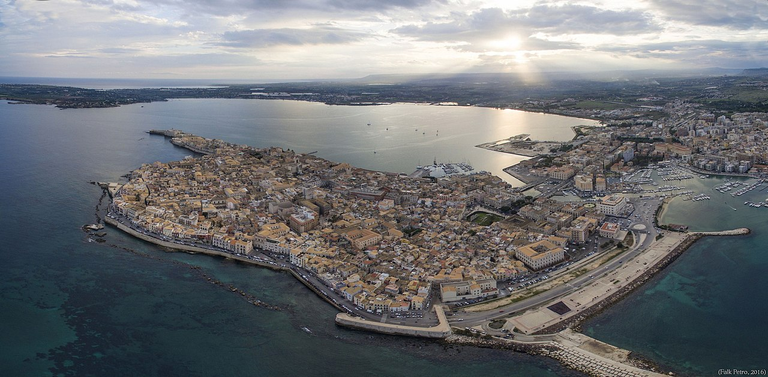
Continuing along the north coast towards the east, again towards Messina, we leave a day for Palermo and Monreale, which, although they do not exhibit Greco-Latin traces at first glance, are a living repertoire of Sicilian medieval past. We pass, of course, through Cefalú, glancing sideways at the ruins of Halaesa, and after this brief stopover we only have to visit Tindaris, an ancient and splendid city that was destroyed by the Arabs around the 9th century, and on whose beaches, according to the Homeric myth, was where Ulysses and his crew were shipwrecked.
And in general, other readings explain that the clever Greek hero was a nostalgic man who never wanted to return to fulfill his marital duties, seeking adventure far from his homeland; like us, who would prefer to remain on this luminous island indefinitely, but who must inexorably return. Thus we complete an unforgettable journey through the "island of Ulysses", as it says in the moving poem by the poet and Nobel Prize winner Salvatore Quasimodo, a native of Modica. Another nostalgic man who sang the praises of the south. Another who did not want to return.

Continuando por la costa norte hacia el este, de nuevo hacia Messina, dejamos una jornada para Palermo y Monreale, que, aunque no exhiben a simple vista trazas grecolatinas, son un repertorio vivo del pasado medieval siciliano. Pasamos, por supuesto, por Cefalú, mirando de reojo a las ruinas de Halaesa, y tras esta breve escala sólo nos queda visitar Tíndaris, antigua y esplendorosa ciudad que hacia el siglo IX fue destruida por los árabes, y en cuyas playas, según el mito homérico, fue donde naufragó Ulises y su tripulación.
Y es que, en general, otras lecturas explican que el astuto héroe griego fue un nostálgico que nunca quiso regresar a cumplir con sus deberes conyugales, buscando la aventura lejos de su patria; como nosotros, que preferiríamos permanecer en esta isla luminosa indefinidamente, pero que debemos inexorablemente volver. Así completamos un recorrido inolvidable por la "isla de Ulises", como reza en el conmovedor poema del poeta y premio Nobel Salvatore Quasimodo, natural de Modica. Otro nostálgico que cantó las excelencias del sur. Otro que no quería volver.
